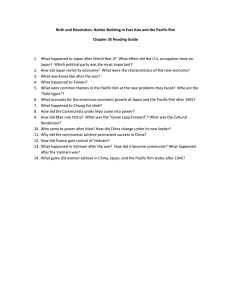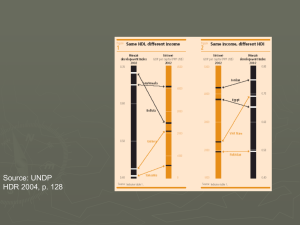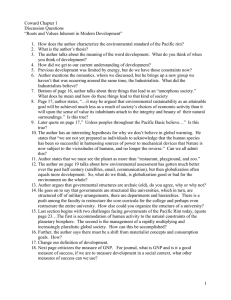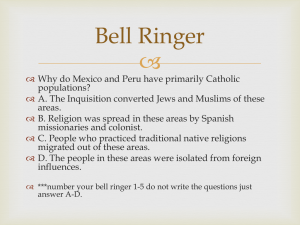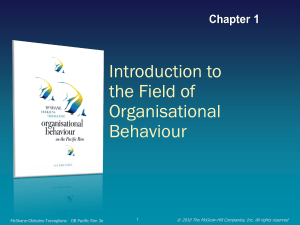Coward Chapter 2
advertisement
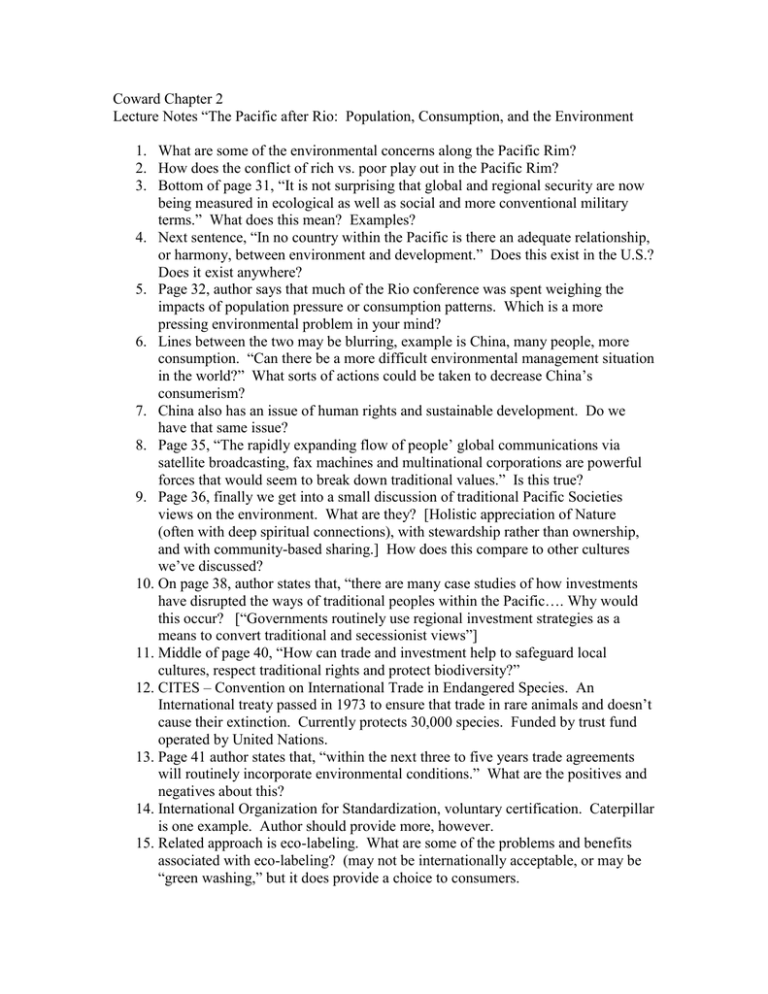
Coward Chapter 2 Lecture Notes “The Pacific after Rio: Population, Consumption, and the Environment 1. What are some of the environmental concerns along the Pacific Rim? 2. How does the conflict of rich vs. poor play out in the Pacific Rim? 3. Bottom of page 31, “It is not surprising that global and regional security are now being measured in ecological as well as social and more conventional military terms.” What does this mean? Examples? 4. Next sentence, “In no country within the Pacific is there an adequate relationship, or harmony, between environment and development.” Does this exist in the U.S.? Does it exist anywhere? 5. Page 32, author says that much of the Rio conference was spent weighing the impacts of population pressure or consumption patterns. Which is a more pressing environmental problem in your mind? 6. Lines between the two may be blurring, example is China, many people, more consumption. “Can there be a more difficult environmental management situation in the world?” What sorts of actions could be taken to decrease China’s consumerism? 7. China also has an issue of human rights and sustainable development. Do we have that same issue? 8. Page 35, “The rapidly expanding flow of people’ global communications via satellite broadcasting, fax machines and multinational corporations are powerful forces that would seem to break down traditional values.” Is this true? 9. Page 36, finally we get into a small discussion of traditional Pacific Societies views on the environment. What are they? [Holistic appreciation of Nature (often with deep spiritual connections), with stewardship rather than ownership, and with community-based sharing.] How does this compare to other cultures we’ve discussed? 10. On page 38, author states that, “there are many case studies of how investments have disrupted the ways of traditional peoples within the Pacific…. Why would this occur? [“Governments routinely use regional investment strategies as a means to convert traditional and secessionist views”] 11. Middle of page 40, “How can trade and investment help to safeguard local cultures, respect traditional rights and protect biodiversity?” 12. CITES – Convention on International Trade in Endangered Species. An International treaty passed in 1973 to ensure that trade in rare animals and doesn’t cause their extinction. Currently protects 30,000 species. Funded by trust fund operated by United Nations. 13. Page 41 author states that, “within the next three to five years trade agreements will routinely incorporate environmental conditions.” What are the positives and negatives about this? 14. International Organization for Standardization, voluntary certification. Caterpillar is one example. Author should provide more, however. 15. Related approach is eco-labeling. What are some of the problems and benefits associated with eco-labeling? (may not be internationally acceptable, or may be “green washing,” but it does provide a choice to consumers. 16. What are “alternative trade networks?” Top of page 42. 17. Is tourism good for traditional lifestyles? Environmentalism? How can it change local attitudes? 18. Page 48, discussion of “numerous problems arising from rural-urban contact.” What are these problems?


